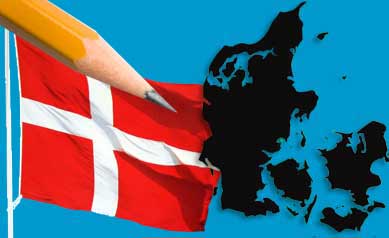The Ethiopian-Eritrean Intelligence War

It has been fifteen years since the bloody border war between Eritrea and Ethiopia ended in 2000. Since then, though the guns has been silenced, and occasional sporadic and limited clashes continued, thousands of Eritrean youth cross the border heading towards Ethiopian refugee camps from where they continue the arduous journey to Europe and elsewhere. Sadly, the region is still licking its wounds.
Though tens of thousands of lives perished in the war, the two countries have failed to resolve their lingering issues militarily, and their diplomatic maneuvers to find a solution has remained abysmal. Worse, both governments have switched full gear to espionage, trying to weaken and sabotage each other in intense intelligence battles, mainly using proxy opposition forces and propaganda onslaught. The intelligence war has escalated so much that an observer commented, “It is like the Berlin wall is transplanted between the two countries, only checkpoint Charlie is missing.”
Both countries have been hosting their adversaries’ opposition forces that they keep under stringent control. However, the Eritrean government has been the worst, extending its intelligence operations to the entire region: Somalia, Djibouti, Ethiopia, and Yemen. That has caused the wrath of the international community which slapped the Eritrean government with several sanction regiments.
Last week’s return of Molla Asghedom to Ethiopia should be seen from this angle. Molla is the leader of Tigray People’s Democratic Movement (TPDM), an Ethiopian opposition group based in Eritrea since the early years after the border war ended.
On September 13, 2015, The Ethiopian Broadcasting Corporation television reported that Molla Asghedom has escaped from Eritrea to Sudan accompanied by hundreds of his troops. According to media reports, “Sudan received the opposition leader and his troops cordially and transported them to Ethiopia in an orderly manner.” Although no sovereign country allows armed groups in its territories without its consent, the unprecedented leniency that the Sudanese security officers showed to the TPDM troops has pleased the Ethiopian government which appreciated the role the Sudan played as a “historical role that the people and the Government of Ethiopia will never forget”.
Over the years, Sudan has seen so many similar incidents. In 1982, it encircled thousands of ELF fighters and disarmed them at gunpoint when they entered Sudanese territories after being pushed by a joint EPLF-TPLF onslaught. And since 2000, it has been receiving tens of thousands of Eritrean conscripts fleeing their country in rejection of the indefinite military service to which they are subjected. But this time the incident involves the Eritrean government, and the cordial reception of forces that escaped from Eritrea is expected to have serious ramification. And though the Eritrean people breathed a sigh of relief for the departure of a chunk of Ethiopian opposition forces, the Eritrean president and his government is the biggest loser because Isaias Afwerki considered TPDM his personal protectors.
Once there was Brig. General Kemal Gelchu
No news has been subjected to so much spin as the Molla Aghedom saga since the escape of Brigadier General Kemal Gelchu. In August 2006, Brigadier General Kemal Gelchu defected from the Ethiopian army to Eritrea together with around 150 soldiers. The Eritrean government-owned shabait.com was quick to report that there was mass opposition to the government of Ethiopia and that “massive uprising is equally being witnessed within the ranks of the Ethiopian Armed Forces.” For months thereafter, linking it to the bloody 2005 Ethiopian elections, Eritrean government media outlets played the news about Kemal Gelchu’s defection and made it seem as if Ethiopia was about to disintegrate due to massive popular uprisings. In the meantime, Kemal Gelchu joined a faction of the Oromo Liberation Front (OLF) and continued to be fattened by the Eritrean government, for some time.
After a few years of cozy relations with the Eritrean government, Kemal Gelchu fell out of favor and conflicting news about his arrest, release, and subsequent house-arrest, started to appear on Ethiopian media. That continued for a few more years until October 24, 2014, when a website affiliated with the Eritrean ruling party reported that, “The Oromo Liberation Front (OLF) Executive Committee today announced the removal of General Kemal Gelchu as its Chairman and purged him from the organization effective immediately.”
That was followed by an allegedly OLF official press release supporting the news that the same website provided a link to. However, on October 25, 2014, only a day later, the same website reported another news stating, “The Oromo Liberation Front (OLF) today denies media reports of General Kemal Gelchu’s expulsion as Chairman of the OLF-for-Change and accused certain disgruntled group of the organization for the baseless report.” Strangely, both conflicting news items were reported by the same website. At any rate, slowly, Brigader Kemal Gelchu disappeared from the scene.
And there was the Eastern Sudan Portfolio
After providing logistical support and training bases for most of Sudan’s opposition forces, in 2006 Isaias Afwerki of Eritrea brokered a peace deal between the Sudanese government and its opposition groups that he had sponsored in Eritrea. The deal provided the leaders of the opposition a number of federal and local government positions. Accordingly, Mussa Mohammed Mussa was given a senior ceremonial position in Omar AlBashir’s office while both Mohammad Yousuf Adam Bashir and Mohammed Tahir Eila were appointed as governors of Kassala and Red Sea provinces respectively. In 2007, Mabrouk Mubarak Salim, formerly the leader of the [Free] Lions Rashaida Group, which was based in Eritrea, became a State Minister in the Ministry of Transport and Roads.
Due to the important appointments that it secured for its Sudanese clients, the Eritrean government enjoyed great influence in the Sudan, particularly in the Kassala and Red Sea provinces that border Eritrea. The Eritrean government deployed its security agents and contraband traders, and started to run Eastern Sudan as a shadow government. Human trafficking with the collaboration of corrupt Eritrean and Sudanese officers became rampant and traffickers increased drastically. Trucks with contraband food and fuel cargo supplied Eritrea where the government set an open contraband markets in Kilo 13, Tessenei, and other villages across the border from Sudan.
All of that started to change beginning last June when Omer Al Bashir began his third term. Among his first decisions were the transfer of Mohammed Tahir Eila from his home province of the Red Sea, to the AlGezira province in central Sudan, and the transfer of Mohammad Yousuf Adam Bashir to a position in the ministry of interior in Khartoum, again away from his home province. They were replaced by Ali Hamid and Adam Gima’a respectively. Immediately, as if to prove they were independence and not beholden to the influence of Isaias Afwerki, both governors adopted stringent border control measures against contraband trade and human trafficking, as well as taking modest steps to curb corruption. The development in Eastern Sudan caused panic in the Eritrean ruling party circles and forced Isaias Afwerki to pay a visit to Sudan to complain about the strict measures that the new governors adopted in Eastern Sudan. However, AlBashir, who was humiliated for years by the International Criminal Court (ICC) which issued a warrant for his arrest, seemed to have regained his self-confidence and didn’t budge. A few days after meeting Isaias, he traveled to South Africa in defiance of the ICC arrest warrant, in addition, he defiantly expressed his decision to attend the upcoming general assembly meeting in New York. Importantly, Al Bashir was emboldened by his renewed relations with the Arab world after he joined the Saudi led alliance fighting against the Houthis of Yemen. Given the above, it is safe to assume that he has freed himself after long years of blackmailing by Isaias Afwerki.
And now there Is the Molla Asghedom saga
In September 6, 2015, reports from Asmara indicated that Dr. Berhanu Negga, the leader of the Ethiopian opposition group, Gnbot 7, became the leader of the four Ethiopian opposition groups that merged under the name of “Ethiopian National Salvation.” For years, Isaias Afwerki was working with determination to create a robust Ethiopian force that he can use to negotiate with Ethiopia for a deal similar to the one he brokered with Sudan in 2006.
Before travelling to Eritrea, Dr. Berhanu lived in the USA until he left for Asmara secretly to avoid the fate of his predecessor, Endarkachew Tsige, who last June was whisked away from the San’aa airport to Ethiopia. He was on his way from London through Dubai and Sana’a, to Asmara; now he is in jail in Ethiopia.
Dr. Berhanu Negga’s Gnbot 7 and four other groups merged and gave birth to the “Ethiopian National Salvation”. Ironically, Molla Asghedom, the leader of the largest group among the four, became deputy to Dr. Berhanu Negga. Eritrean observers widely believed that Molla Asghedom must have been coerced into accepting the arrangement. That is because TPDM forces are estimated to be around 20,000 people as reported by UN Somalia-Eritrea Monitoring Group based on information obtained from a senior Eritrean government official, though judging from Molla Asghedom’s interview, the 20,000 number seems to be very exaggerated. In comparison, Gnbot 7 reportedly has around 800 armed troops and it has been weakened after its Secretary General, Andargachew Tsege, was arrested.
Molla Asghedom’s TPDM was the Eritrean government’s favorite group until recently when he faced Brigadier General Kemal Gelchu’s fate. However, based on his interviews, it is evident that Molla Asghedom holds the Diaspora Ethiopian opposition in very low esteem; naturally he couldn’t accept a Diaspora member like Dr. Berhanu Negga to become his boss. He must have accepted the merger arrangement under duress and posed for a photo op to fake his acceptance. Remarkably, only a few days later he crossed to the Sudan and surrendered along with his loyal troops numbering about 120 soldiers. Immediately the news about his defection spread in the camps across Eritrea, TPDM forces panicked, and their commanders lost control of of the combatants after the chaos that ensued. The combatants started to flee the camps in all directions, and before the end of the day, around 600 troops ended up in Sudan; some of them were killed in clashes with Eritrean border patrol who tried to stop them.
Every month about 4 to 5 thousand Eritreans escape the country to Sudan and Ethiopia; the security patrol around the border area is very strict and many Eritreans are shot dead by border patrol as they flee the country. The escaping TPDM combatants could have met the same fate, while hundreds have disappeared from their camps—they either headed south to Ethiopia, or are in hiding somewhere in Eritrea, or, apprehended by security forces. Not counting the wounded, TPDM has lost about a dozen lives in the clashes; the number of casualties from the Eritrean side is not yet known.
And there will always be a spin
The Molla Asghedom Saga received huge coverage among the people of the Horn of Africa due to the fact that many individuals and media outlets have put a spin on it to fit each of their particular audience. It became worse because social media is not bothered by accountability or transparency. Unfortunately the official media outlets of the two countries had little to say about it except that the Ethiopian television provided an extensive interview with Molla Asghedom. However, the underlying theme of the news has been the over promotion and lionization of the “magnificent intelligence arm” of the two countries. This has been a major undertaking by the Ethiopian media, emphasizing that Molla Asghedom was a mole in Eritrea. And not to be outdone, Eritrean supporters of the regime boasted about the brilliance of their government’s intelligence units “that exposed the conspiracy of Molla Asghedom and he had to run away in haste.” The counter spin also includes some Ethiopian claims that Molla was planning to lure Dr. Berhanu to the border areas where he would be kidnapped and whisked away to Ethiopia, just like Endarkachew Tsige, which some Eritrean government supporters spin, claiming that Molla Asghedom had to flee because the Eritrean intelligence units uncovered that plot as well.
At the end, the root of the Ethiopian-Eritrean problem remains unresolved, while the saga proved to be one more episode in a series of intelligence games with little value for the players, and with lesser value for the beleaguered people straddling the border areas between the two countries.
Related Reading:
The Ruling Party Of Eritrea And Its Ethiopian Allies
Oct. 24 news title: Brig General Hailu Gonfa Replaces General Kemal Gelchu
Oct. 25 news title: OLF Denies Expelling General Kemal Gelchu




Awate Forum